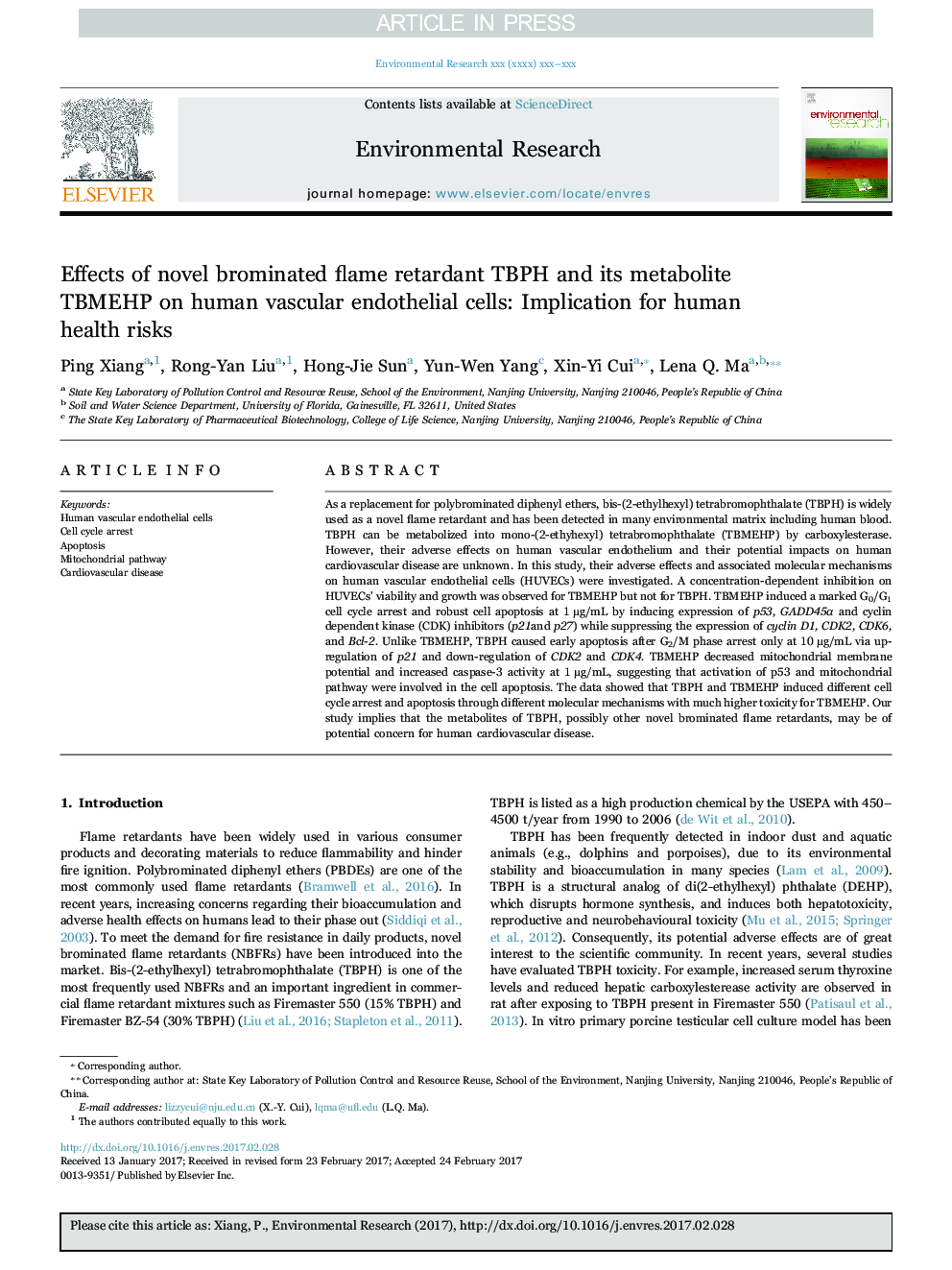| Article ID | Journal | Published Year | Pages | File Type |
|---|---|---|---|---|
| 5756526 | Environmental Research | 2017 | 9 Pages |
Abstract
As a replacement for polybrominated diphenyl ethers, bis-(2-ethylhexyl) tetrabromophthalate (TBPH) is widely used as a novel flame retardant and has been detected in many environmental matrix including human blood. TBPH can be metabolized into mono-(2-ethyhexyl) tetrabromophthalate (TBMEHP) by carboxylesterase. However, their adverse effects on human vascular endothelium and their potential impacts on human cardiovascular disease are unknown. In this study, their adverse effects and associated molecular mechanisms on human vascular endothelial cells (HUVECs) were investigated. A concentration-dependent inhibition on HUVECs' viability and growth was observed for TBMEHP but not for TBPH. TBMEHP induced a marked G0/G1 cell cycle arrest and robust cell apoptosis at 1 μg/mL by inducing expression of p53, GADD45α and cyclin dependent kinase (CDK) inhibitors (p21and p27) while suppressing the expression of cyclin D1, CDK2, CDK6, and Bcl-2. Unlike TBMEHP, TBPH caused early apoptosis after G2/M phase arrest only at 10 μg/mL via up-regulation of p21 and down-regulation of CDK2 and CDK4. TBMEHP decreased mitochondrial membrane potential and increased caspase-3 activity at 1 μg/mL, suggesting that activation of p53 and mitochondrial pathway were involved in the cell apoptosis. The data showed that TBPH and TBMEHP induced different cell cycle arrest and apoptosis through different molecular mechanisms with much higher toxicity for TBMEHP. Our study implies that the metabolites of TBPH, possibly other novel brominated flame retardants, may be of potential concern for human cardiovascular disease.
Keywords
Related Topics
Life Sciences
Environmental Science
Health, Toxicology and Mutagenesis
Authors
Ping Xiang, Rong-Yan Liu, Hong-Jie Sun, Yun-Wen Yang, Xin-Yi Cui, Lena Q. Ma,
